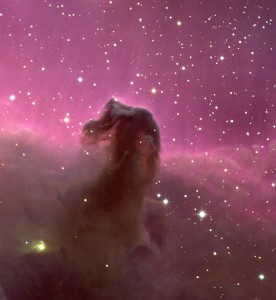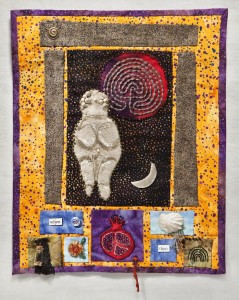In the northern hemisphere, the winter solstice is upon us.
On December 21 at 4:03 MST, the North Pole reaches the point at which it is tilted furthest – 23.5 degrees – away from the Sun. One breath later, we begin to tilt slowly back toward the light, toward warmth, toward longer days and shorter nights, toward a new awakening of seeds, toward the birth of new animals into the domestic herds.
But Yule (or Winter Solstice) is a paradoxical holy day. Even as we are slowly moving back toward fertility and the renewal of the land, back toward greening; the stores of food carefully put up and laid down for the lean times, are waning. It has been almost three months since the last of the fresh vegetables and apples were gathered. This is the final feast before the hard winter enfolds the land and famine becomes a very real possibility.
Few (if any) of us will face the same physical lean times our ancestors did as we mark the days between now and April when the earliest crops, carefully coddled in the chancy Imbolc weather, will appear. But spiritual lean times…that is another matter.
As I have written more than once, the Samhain quarter invites us into attentive waiting for a new thing to be revealed, to take form and shape, to incarnate itself in our hearts and minds and souls and bodies. But the reality is that while we wait, we are in a time of ultimate vulnerability. Like the lobster who has molted, we are ‘soft-shelled.’ True waiting is not something we can force our way through; it requires a release, a surrender, an open expansive exposure, a willing suspension of disbelief (as we say in the theatre).
And, the fact is, we cannot imagine what we have not experienced. So the new thing we await very often looks (to our inner eye and our inner expectation) not a whole lot different than what we left behind. We are quite incapable of dreaming something wildly alien.
And, yet, transformation – true transformation – is wildly alien. It catapults us into a world quite outside our previous experience, previous thought patterns, previous beliefs, previous boundaries. It invites us to be wholly new, wholly fresh and refreshed. It is resurrection.
But to be there, we must let go of here.
To be that, we must let go of this.
To become someone beyond our farthest imaginings, we must let go of our current imagining.
We must release the moorings.
This is an odd and unsettling practice in a time as full of tradition as December in the northern hemisphere. Even as we want to let go of meaningless or stale behaviors and patterns, we feel the tug of familiarity (and the pushback of family and friends). Even as we feel stifled by the same old-same old, and look longingly for possibility and challenge, we come to the edge of what we know, and we see the ancient warning, “Here be dragons.”
Well, many many years ago (still in high school), I read Dragonflight – the first of Anne McCaffrey’s chronicles of the Dragonriders of Pern – and I fell in love with dragons. I still remember a conversation with Katherine Kurtz (herself a well-known writer of fantasy) a decade or so after Dragonflight was published. Katherine sighed and said, with real longing, “Oh, yes, I don’t know a single person who hasn’t said, ‘I want one of those!’ It is very humbling to the rest of us who try to write interesting books. All we want to do is be lost in one of hers.”
 And so, my friends, I invite you to join me out where ‘there be dragons.’ I invite you to lean forward into miraculous possibility, past everything you have ever known. I invite you to molt the carapace that has protected you and become clay in the hand of the Holy, to be shaped for a new year, a new vocation, a new hope, a new challenge, a new dream.
And so, my friends, I invite you to join me out where ‘there be dragons.’ I invite you to lean forward into miraculous possibility, past everything you have ever known. I invite you to molt the carapace that has protected you and become clay in the hand of the Holy, to be shaped for a new year, a new vocation, a new hope, a new challenge, a new dream.
Blessed Solstice!
–Andrea
Text © 2014, Andrea La Sonde Anastos
Photos © 2013, Immram Chara, LLC; 2009, Nigel Sharp
Note: The first photo is from one of my fiber pieces, called Rebirth (clicking on the picture will enlarge it). It was created in 2010 and you can read about it in Earlier Archives here on the website. The second is the Horsehead Nebula. The photo was taken 21 July 2009 and is copyright Nigel Sharp (used by permission).
